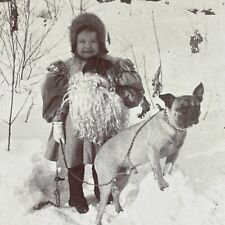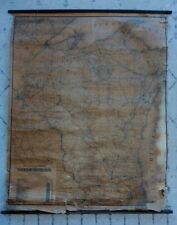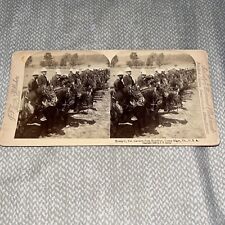When you click on links to various merchants on this site and make a purchase, this can result in this site earning a commission. Affiliate programs and affiliations include, but are not limited to, the eBay Partner Network.
A rare item with Chicago origin measuring approximately 2 1/4 inches. Appears to be original paint with loss and craquelure as pictured. Three photos near last photo for reference only. Thanks for looking.Before the car was kingRobert LoerzelChicago TribuneAlmost as soon as automobiles appeared on the streets of Chicago, people wondered whether driving induced insanity.
A Catholic priest on the South Side called it \"auto madness.\" A Tribune headline asked: \"Is the Automobile Mania a Form of Insanity?\" And Mayor Carter Harrison Jr. remarked, \"The natural tendency of a man operating an automobile is to run it at high speed.\"Horseless carriages showed up in Chicago as early as 1892, and the city hosted the nation\'s first auto race in 1895 — only two of the seven cars even made it to the finish line, with the winner puttering along at 5 mph. Just a handful of wealthy Chicagoans were driving automobiles around 1899, at a time when the streets were filled with horse-drawn vehicles, streetcars, pedestrians and bicycles.
With the 107th Chicago Auto Show opening on Valentine\'s Day, it\'s hard to imagine life in the U.S. before the automobile so dominated the national identity. Today, cars are the unchallenged kings of the road but around the turn of the last century, the debate was how much these newfangled contraptions should use the roads. A bicycle-loving mayor threatened to crack down on the up-and-coming auto.Chicago was one of the first big cities to pass laws regulating autos, setting a speed limit of 8 mph in 1899. If you wanted to drive, you had to go in front of the Board of Examiners of Operators of Automobiles. These three city officials decided whether you had sufficient \"physical ability, mental qualifications and ... ability to understand the working parts of the mechanism.\" The same board could revoke your license if you showed \"carelessness\" or \"intemperance\" behind the wheel.
At first, the city did not put an age limit on drivers. Examiners were \"astounded\" in September 1900 when 13-year-old Jeannette Lindstrom applied for a license. Her father said she\'d been driving the family car for three months. The bright North Sider aced the test and got her license. \"Chicago has probably the youngest licensed automobile operator in the world,\" the Tribune observed.As motorists drove across the city, they were confronted with a patchwork of jurisdictions. Chicago had three major park districts at the time, each covering a separate portion of the city, and each had its own automobile laws. The city\'s police monitored the traffic on other streets. One park board tried to ban autos from South Side parks and boulevards in 1899, but motorists drove through them anyway, ringing their gongs as they buzzed past the \"sparrow cops,\" the nickname for the park district\'s patrolmen.
In 1900, North Siders began hearing \"strangely weird and beautiful music\" coming from the streets outside their homes in the middle of the night. A few motorists were holding \"automatic midnight musical parties,\" going for rides with friends and playing music boxes as they sped down the empty streets, the Tribune reported.
A less charming noise was more common: the ringing of bells and gongs. A city ordinance required motorists to sound these alarms to warn pedestrians and other vehicles as they approached, but some drivers seemed to delight in scaring people.
\"The other day on one of the North Side boulevards, I heard a toot that seemed right behind me,\" Mayor Harrison remarked in 1902. \"I jumped about six feet and then looked around. The machine was fully a half-block away, and when it went past, all the occupants grinned as if it were a good joke. These fellows blow their horns just to see the people jump, I believe.\"
Chicagoans called automobiles \"buzz wagons\" and \"devil wagons.\" Reckless drivers were \"scorchers,\" a word that originally described speeding bicyclists in the 1890s. \"Auto Scorchers a Terror,\" the Tribune declared in 1902 — at a time when about 800 people in a city of 1.7 million had automobile licenses.
The mayor, an avid bicyclist, threatened to crack down on motorists. \"There are a number of young fools, who have more money than brains, who are running these automobiles over the boulevards at express time speed and they are going to get into trouble,\" Harrison said.Automobilists said the criticism was unfair.
\"We are treated like a lot of hoodlums,\" said Frank P. Illsley, a member of the elite Chicago Automobile Club. \"We can\'t ride through the park but one of the sparrow cops comes after us and waves his hand to tell us we should slow up. Ten years or more ago, everybody had it in for the bicycle riders. Now they are against the auto owners.\"
In those early years, the police didn\'t have any motor vehicles of their own to chase after speeding cars. And they had no easy way of identifying motorists or automobiles. In 1901, the city required motorists to wear metal badges displaying their license numbers. And then, a hit-and-run accident injured a park police officer in December 1902, spurring the City Council to require identification numbers on autos.
\"You might as well insist that every man in Chicago should wear a number,\" complained Chicago Automobile Club President Charles Gray. \"You wait until you catch a thief before you number him. ... You want to number us like convicts. When we do wrong, let the police catch us.\"
A motorist sued, saying he had a constitutional right to drive his car on the public streets, and in 1904 an Illinois appellate court said he was right.
In spite of the ruling, the City Council approved a new ordinance spelling out more details on what it took to qualify for a license. You had to be at least 18, with \"the free and full use of both arms and both hands.\" You had to have good hearing and eyesight, and be free from epilepsy, heart disease, alcoholism and drug addiction. \"Applicants must be not of reckless disposition nor subject to fainting fits,\" the law noted.
The Chicago Automobile Club fought the law, and a judge blocked the city from arresting club members for driving without identification numbers on their vehicles. But in 1905, an appellate court threw out those injunctions, clearing the way for the city to enforce its laws.
By that time, motorists were flocking to Sheridan Road, using the suburban thoroughfare for outings through the North Shore. Police in Evanston and Glencoe used stopwatches to figure out how fast they were going. Evanston police Officer Arthur Johnston fired a revolver at one speeding car, puncturing a tire. \"Those people were law breakers, and Johnston had a perfect right to do what he did,\" Evanston police Chief Alfred Frost said.
After Glencoe installed a speed bump on Sheridan about 100 people gathered and cheered as cars were jolted by the unexpected obstacle. One chauffeur was thrown out of a car as it hit the hurdle. \"There\'s nothing too bad for these pirates up here,\" fumed the auto\'s owner, George Rust of Highland Park.The confusion over the multiple jurisdictions started to clear up in 1907, when Illinois began registering autos and issuing statewide license plates. Chicago continued requiring its own city license until the Illinois Supreme Court stopped the practice seven years later.
Chicago\'s first \"auto court\" began hearing cases on June 5, 1912. Municipal Judge Hugh Stewart predicted that tough enforcement would bring a swift end to dangerous driving. \"There will be no automobile or motorcycle speeding in Chicago at the end of 30 days,\" he said. \"There have been too many deaths in Chicago lately from cases of this kind and we are determined to put a stop to such disregard for life.\"









